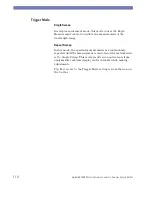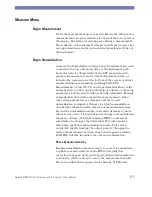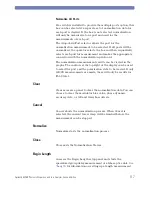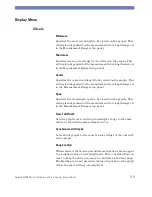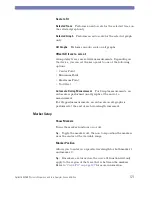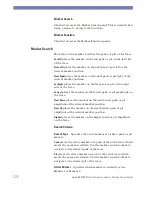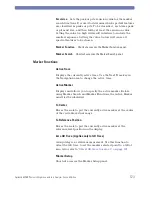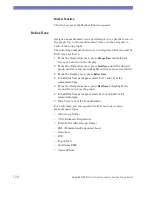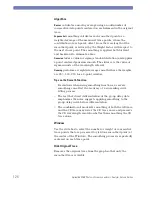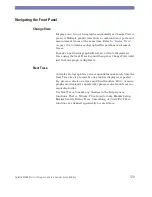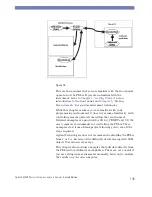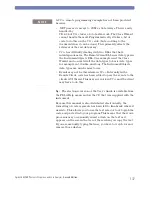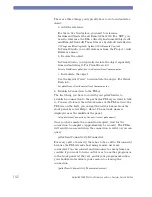
Agilent 86038B Photonic Dispersion and Loss Analyzer, Second Edition
127
Curve Fit
Extracting individual values, like zero-dispersion wavelength,
from chromatic dispersion measurements is greatly improved by
fitting an appropriate model equation to the measured relative
group delay data. Because direct differentiation of the raw
group delay data tends to amplify the effect of noise, the values
l
0
, S
0
and D(
l
), the value of dispersion at any particular
wavelength, are calculated from the fitted curve. The model
equation should be chosen according to the type of device being
measured.
Curve Fitting also allows for comparing measurement to the
desired result and determining the deviation or ripple.
Enable Curve Fit
When selected, the specified curve fitting algorithm is applied to
the trace. If markers are activated, only the wavelength range of
the trace between the markers is used for the fit.
Algorithm
The fits described below can be made dependent on wavelength
or optical frequency; that is the independent variable x in the
equations can be either wavelength or frequency. The labels for
the frequency dependent fits include the text "(frequ.)".
Linear
fits the data to a straight line. The equation is of the
form: y = mx + b. It is commonly used for dispersion-shifted
fiber in the 1550 nm wavelength region, in which waveguide
dispersion is dominant. This is also a useful fit for dispersion
compensating devices and to evaluate the GD ripple of filter
components. Similarly, the Linear (frequ.) curve fit is
appropriate for fitting the optical phase of a component with
no dispersion, and the deviation gives the phase ripple.
Cubic
makes a least squares fit to the 3rd-order polynomial
equation, C
3
x
3
+C
2
x
2
+C
1
x+C
0
,
Quadratic
makes a least squares fit to the equation
. This is a good approximation to any parabolic
shape, for example to locate the zero-dispersion wavelength
from GD data. The Quadratic (frequ.) fit is appropriate for
the optical phase of a measurement with constant dispersion
(at least over a short wavelength range).
y
Ax
2
Bx
C
+
+
=
Summary of Contents for 86038B
Page 1: ...Agilent 86038B Photonic Dispersion and Loss Analyzer User s Guide ...
Page 4: ...4 ...
Page 20: ...20 Agilent 86038B Photonic Dispersion and Loss Analyzer Second Edition ...
Page 34: ...34 Agilent 86038B Photonic Dispersion and Loss Analyzer Second Edition Figure 2 b Rear Panel ...
Page 78: ...78 Agilent 86038B Photonic Dispersion and Loss Analyzer Second Edition ...
Page 92: ...92 Agilent 86038B Photonic Dispersion and Loss Analyzer Second Edition ...
Page 202: ...202 Agilent 86038B Photonic Dispersion and Loss Analyzer Second Edition End Sub ...
Page 348: ...348 Agilent 86038B Photonic Dispersion and Loss Analyzer Second Edition ...
Page 349: ......


